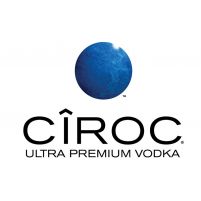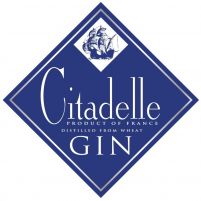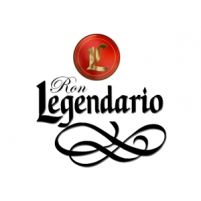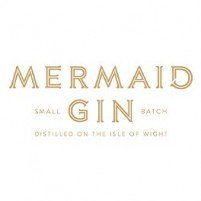0 products product (empty)
White Vodka
- SALE
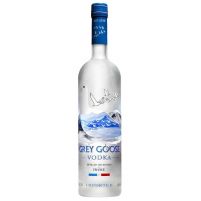
Grey Goose 1L
Vodka(6)65,50 € 31,95 €26,40 € + VAT (21%)Price size: 1LAlso in: 1.75L 65,90€ | 70cl 30,65€ | 4.5L 349,95€ | 6L 440,00€ | 5cl (Miniature) 3,99€ | 3L 179,95€Alcohol Volume: 40%Liquor Style: NeutralCountry: FranceDisplay: Boxed BottleIts characteristic smoothness and distinctive character are the result of an extraordinary passion at the time of preparation and an unparalleled commitment to achieve the highest quality.
- SALE
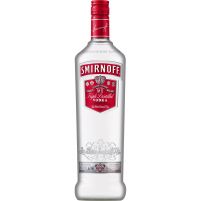
Smirnoff Red Label 1L
Vodka(2)15,95 € 11,95 €9,88 € + VAT (21%)Price size: 1LAlso in: 70cl 9,90€ | 3L 47,95€ | 5cl (Miniature) 1,78€Alcohol Volume: 37.5%Liquor Style: NeutralCountry: RussiaAvailable Plastic Miniature Bottle
Smirnoff vodka is triple distilled and exceptionally smooth. Ten Times filtered in a unique process for ultimate clarity. Smirnoff Vodka is the number 1 vodka in the world. Its classic taste has inspired other varieties throughout the four corners of the world.
- SALE
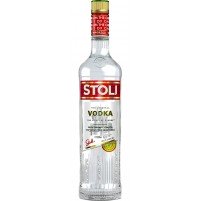
Stolichnaya 70cl
Vodka(1)11,95 € 8,95 €7,40 € + VAT (21%)Price size: 70clAlcohol Volume: 40%Liquor Style: NeutralCountry: RussiaA premium vodka made from natural ingredients and originating from the authentic Russian tradition, this is Stolichnaya.
- SALE
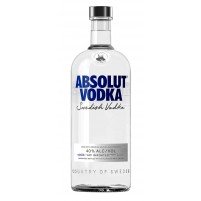
Absolut 1L
Vodka(3)19,90 € 16,95 €14,01 € + VAT (21%)Price size: 1LAlso in: 70cl 14,70€ | 5cl (Miniature) 1,80€Alcohol Volume: 40%Liquor Style: NeutralCountry: SwedenAvailable Cristal Miniature Bottle Vodka Absolut
ABSOLUT VODKA is made exclusively from natural ingredients, unlike what happens with many other vodkas, contains no added sugar. Taste: Rich, full-bodied and complex, but smooth and mellow with a distinct character of the wheat grain, followed by a hint of dried fruit.
- SALE
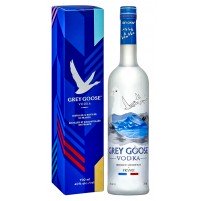
Grey Goose 70cl
Vodka(6)52,99 € 30,65 €25,33 € + VAT (21%)Price size: 70clAlso in: 1L 31,95€ | 1.75L 65,90€ | 4.5L 349,95€ | 6L 440,00€ | 5cl (Miniature) 3,99€ | 3L 179,95€Alcohol Volume: 40%Liquor Style: NeutralCountry: FranceDisplay: Boxed BottleIts characteristic smoothness and distinctive character are the result of an extraordinary passion at the time of preparation and an unparalleled commitment to achieve the highest quality.
- SALE
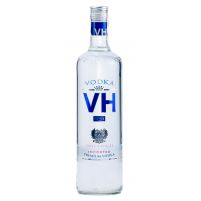
Rives Von Haupold 1L
Vodka(3)9,50 € 8,55 €7,07 € + VAT (21%)Price size: 1LAlcohol Volume: 37.5%Liquor Style: NeutralCountry: SpainTaste Rives Von Haupold, your Premium Rives Brand Vodka.
- SALE
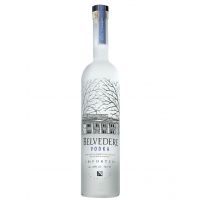
Belvedere 70cl
Vodka(5)39,00 € 28,95 €23,93 € + VAT (21%)Price size: 70clAlso in: 1L 35,30€ | 3L 230,00€ | 6L 395,00€ | 1.5L 79,00€ | 5cl (Miniature) 4,99€Alcohol Volume: 40%Liquor Style: NeutralCountry: PolandBelvedere Vodka is an incredible premium vodka that has received several medals at the annual Vodka Masters. It won more awards than any of the other 116 vodkas entered in the blind tasting, which makes its quality clear.
- Free Shipping1 + 1 + 1
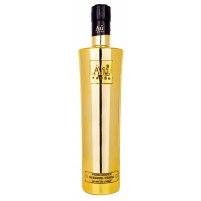
Au Original Premium 70cl
Vodka36,00 € 19,95 €16,49 € + VAT (21%)Price size: 70clAlcohol Volume: 40%Liquor Style: NeutralCountry: United KingdomExceptionally Pure, Exquisitely Unique: Au Original, the Ultra Premium Vodka that makes the difference. Pure gold.
- SALE

9 Mile 70cl
Vodka13,95 € 9,55 €7,89 € + VAT (21%)Price size: 70clAlcohol Volume: 37.5%Liquor Style: NeutralCountry: United StatesIlluminated BottleThe taste and design of this Grand Canyon-inspired Vodka will leave you out of words
- SALE

Stolichnaya Fair Pack 70cl
Vodka17,75 € 15,30 €12,64 € + VAT (21%)Price size: 70clAlso in: 70cl 15,30€Alcohol Volume: 40%Liquor Style: NeutralCountry: RussiaNever has a fair been so cheap with Yo Pongo El Hielo and its super pack of Stolichnaya, 6 cans of Schweppes Tonic or 7up and 6 glasses so you can start the fair off right, in style.
- SALE

Belvedere 1L
Vodka(5)37,95 € 35,30 €29,17 € + VAT (21%)Price size: 1LAlso in: 3L 230,00€ | 6L 395,00€ | 70cl 28,95€ | 1.5L 79,00€ | 5cl (Miniature) 4,99€Alcohol Volume: 40%Liquor Style: NeutralCountry: PolandBelvedere Vodka is an incredible premium vodka that has received several medals at the annual Vodka Masters. It won more awards than any of the other 116 vodkas entered in the blind tasting, which makes its quality clear.
- SALE
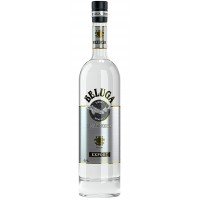
Beluga 70cl
Vodka52,00 € 30,95 €25,58 € + VAT (21%)Price size: 70clAlso in: 1L 36,65€Alcohol Volume: 40%Liquor Style: NeutralCountry: RussiaTaste Beluga, your Premium Vodka.
- SALE
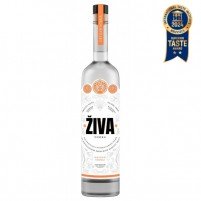
Ziva Oxygen Vodka 70cl
Vodka(2)39,00 € 33,95 €28,06 € + VAT (21%)Price size: 70clAlcohol Volume: 42%Liquor Style: NeutralCountry: PolandZiva Oxygen Vodka, a perfect choice for vodka lovers. With Polish origin and a distinctive distillation and oxygenation process, it guarantees an unparalleled taste experience. Additionally, its commitment to tradition and innovation has been recognized with the Superior Taste Award. Need more evidence to see that we're dealing with a very top-notch vodka?
- SALE

Absolut 70cl
Vodka(3)15,95 € 14,70 €12,15 € + VAT (21%)Price size: 70clAlso in: 1L 16,95€ | 5cl (Miniature) 1,80€Alcohol Volume: 40%Liquor Style: NeutralCountry: SwedenAvailable Cristal Miniature Bottle Vodka Absolut
ABSOLUT VODKA is made exclusively from natural ingredients, unlike what happens with many other vodkas, contains no added sugar. Taste: Rich, full-bodied and complex, but smooth and mellow with a distinct character of the wheat grain, followed by a hint of dried fruit.
- SALE
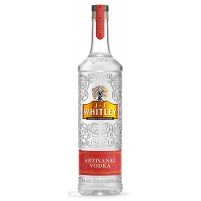
J.J. Whitley Artisanal Silver Filtered 70cl
Vodka15,70 € 9,95 €8,22 € + VAT (21%)Price size: 70clAlcohol Volume: 38%Liquor Style: PremiumCountry: EnglandVariety: NeutralJ. J. Whitley Artisanal Silver Filtered vodka is made by selecting the finest winter wheat and the waters of artesian wells 160 metres deep.
- SALE
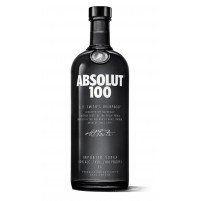
Absolut 100 Overproof 1L
Vodka34,00 € 23,60 €19,50 € + VAT (21%)Price size: 1LAlcohol Volume: 50%Liquor Style: NeutralCountry: SwedenExplore Absolut 100, L.O. Smith's bold jewel with a daring 50% alcohol. This super-premium vodka, distinguished by its black bottle, offers an exquisite, refined, and elegant experience. Its unique intensity elevates your moments, whether enjoyed neat, on the rocks, or as a base for cocktails.
- SALE

Absolut Fair Pack 70cl
Vodka21,75 € 20,20 €16,69 € + VAT (21%)Price size: 70clAlso in: 70cl 20,20€Alcohol Volume: 40%Liquor Style: NeutralCountry: SwedenNever has a fair been so cheap with Yo Pongo El Hielo and its super pack of Absolut, 6 cans of Schweppes Tonic and 6 glasses so you can start the fair off right, in style.
- SALE
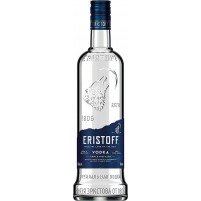
Eristoff 1L
Vodka(3)13,89 € 12,85 €10,62 € + VAT (21%)Price size: 1LAlso in: 70cl 9,95€Alcohol Volume: 37.5%Liquor Style: NeutralCountry: GeorgiaIt comes in a bottle with a bell-shaped base, on which is represented the Russian imperial crown, and a logo with a wolf howling at the moon. This is because it has its origin in Georgia, and meaning "land of the wolfs".
- SALE

9 Mile Fair Pack 70cl
Vodka19,75 € 15,95 €13,18 € + VAT (21%)Price size: 70clAlso in: 70cl 15,95€Alcohol Volume: 37.5%Liquor Style: NeutralCountry: United StatesNever has a fair been so cheap with Yo Pongo El Hielo and its super pack of 9 Mile, 6 cans of Fanta Lemon or Schweppes Tonic and 6 glasses so you can start the fair off right, in style.
- SALE
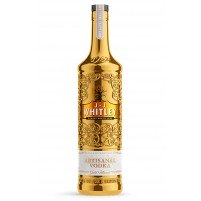
J.J. Whitley Artisanal Gold Filtered 70cl
Vodka15,70 € 9,95 €8,22 € + VAT (21%)Price size: 70clAlcohol Volume: 38%Liquor Style: PremiumCountry: EnglandVariety: NeutralFrom Russia, the land of vodka, comes J.J. Whitley Artisanal Vodka made with naturally purified water drawn from deep artesian wells.
- SALE
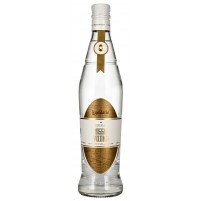
Legendario 9550 Vodka 70cl
Vodka14,80 € 12,50 €10,33 € + VAT (21%)Price size: 70clAlcohol Volume: 40%Liquor Style: NeutralCountry: CubaLegendario 9550 Vodka is the world's first vodka distilled from sugar cane molasses, according to the spirits company.
- SALE
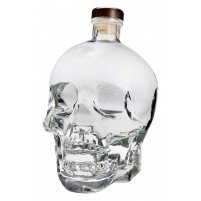
Crystal Head 70cl
Vodka(4)47,00 € 37,95 €31,36 € + VAT (21%)Price size: 70clAlso in: 1.75L 91,00€Alcohol Volume: 40%Liquor Style: NeutralCountry: CanadaTaste Crystal Head, your Premium Vodka.
- SALE
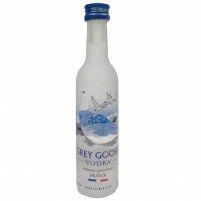
Grey Goose 5cl (Miniature)
Vodka(6)4,95 € 3,99 €3,30 € + VAT (21%)Price size: 5cl (Miniature)Also in: 1L 31,95€ | 1.75L 65,90€ | 70cl 30,65€ | 4.5L 349,95€ | 6L 440,00€ | 3L 179,95€Alcohol Volume: 40%Liquor Style: NeutralCountry: FranceDisplay: Boxed BottleIts characteristic smoothness and distinctive character are the result of an extraordinary passion at the time of preparation and an unparalleled commitment to achieve the highest quality.
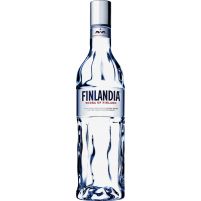
Finlandia 70cl
Vodka(2)11,95 €9,88 € + VAT (21%)Price size: 70clAlso in: 1L 18,75€Alcohol Volume: 37.5%Liquor Style: NeutralCountry: FinlandFinland is one of the purest Vodka that can be found today. A product of Finland and winner of several awards. The Finlandia Vodka uses glacial spring water and barley to produce a fresh and clean vodka and delivered to you unadulterated.
WHAT IS WHITE VODKA?
As with other drinks, Vodka has varieties and one of them is White Vodka. White vodka is the most common, the oldest and the one we know the most. It is really the purest or neutral vodka without any flavouring or flavouring and obviously without colour.
White vodka is a distillate that comes from the fermentation of any plant rich in starch, such as wheat, beet, potato etc.. Formed by ethanol and water, it is a simple, alcoholic liquid with no outstanding aroma or flavour, which makes it a rather tasteless, or pure, drink. It usually has an alcohol content of around 40º, although there are Polish vodkas that reach 80º or more. It seems funny that it means water at that strength.
HISTORY OF VODKA
The word "Vodka" comes from the Russian word "voda", meaning water, with the ending "ka", which acts as a diminutive. Literally translated it would be "little water" or "small water".
The origin of vodka can be traced back more than a thousand years to Russia and Eastern Europe. When we talk about vodka, we have attributed its origin to Russia, as it is a national symbol of this country, but its origin is very controversial and is highly disputed between Russia and Poland.
In any case, it dates back to the beginning of the 15th century, and its production was motivated by the great difficulty of producing wine in these countries, where the climate is adverse for grapes. The vodka produced at that time had two characteristics: it only required a cheap and available raw material such as cereal and potatoes, and its production was very simple. In addition, it was produced for medicinal purposes, in the early days. The most recent written reference to it can be found in a Polish document from 1405.
At the beginning of its production this liquor was of very low quality, until it was allowed to be produced on the estates of the nobles. In one of these small factories, the method of purifying vodka with charcoal was invented. It was then that it became a drink of crystalline purity and very high quality.
After the First World War, vodka was internationalised and reached North America. During the Second World War, the distillate ceased to be an exclusive Russian product and began to be produced in Western countries, mainly in the United States, where vodka also began to be made from potatoes and corn. As a result, its consumption spread worldwide.
THE PRODUCTION PROCESS
White vodka or pure vodka has a quick production process, as it does not require any ageing in barrels.
First of all, the alcoholic liquid is made by fermenting grain and water. The cereals are pressed and the grains are ground into flour, water is added and mixed under pressure. Everything is heated to convert its starch into sugar and yeast is added to produce fermentation, where alcohol is obtained.
Afterwards, the distillation process begins. Depending on the number of distillations, the purity and quality of the distillate varies from one brand to another, or the so-called Premium brands. This is where the base spirit is obtained, a liquid without smell or taste. It is heated again to extract most of its alcohol, until it is reduced to the required alcohol content.
Then comes the filtration to remove impurities and finally water is added to filter and purify, as well as to remove aromatic elements to achieve a vodka without flavour and neutral, which is the characteristic of white vodka.
Finally, it has to be dissolved in pure water until it reaches a graduation of around 40º, since without dilution what we obtain is pure 96º ethanol, which you would have to be very brave if you were to drink it like that.
TYPES OF WHITE VODKA
When we talk about white vodka, we are referring to the purest and most crystalline of vodkas, it has no colour whatsoever.
As for the types of white vodka, the most important classification is taking into account the raw materials used to make it, and we find:
Rye vodka
It is a very popular ingredient in Eastern Europe, and gives the vodka a mild, sweet aroma and flavour.
Molasses vodka
This is a syrup extracted by refining sugar. It has purer aromas, and is slightly sweeter than vodkas made from grain.
Potato vodka
This vodka is more expensive to make, as the raw material is difficult to work with. It is mainly produced in Poland because of its climate.
Wheat vodka
This is the most popular ingredient in Western Europe and the USA, as wheat is considered to produce the best quality vodka.
We can also find in the market white vodkas flavoured with flavours, which, although it does not have any type of colour and maintains its essence, can give us aromatic notes of any fruit, plant, flowers.
Just as today in the market we can find vodkas produced in different parts of the world, such as French, American, Finnish and Russian vodkas, of course.
It should be noted that the difference between a Premium vodka and a normal one will come from the distillation process and the number of times it is made, up to 9 times, giving vodkas with very few impurities and pure for those who love to drink the liquor alone or with ice.
COMPOSITION OF WHITE VODKA
If we were to say what is the basis of white vodka in the most simplified way it is simple: ethanol and water. This is the main characteristic of this drink, making it tasteless or pure depending on who drinks it.
The idea under which its production was conceived was to achieve a drink with a high concentration of alcohol, which would prevent it from freezing at temperatures below 0 degrees Celsius.
Unlike other alcoholic beverages, which always contain a component other than water and alcohol, vodka is based precisely on this. It is true that, in recent years, a slight 'flavouring' has been allowed, and white vodkas with flavourings have been appearing, as for example in gins, but, in any case, it is much lighter than in gins.
TASTE OF WHITE VODKA
If we talk about the taste of vodka, we can say that the best word to define it is neutral taste. As we have seen, its composition and production make it odourless and tasteless.
That is precisely why it is said to be the purest alcoholic beverage and this absence of flavour makes it the perfect ingredient in cocktails, for the inclusion of alcohol without any added flavour.
COCKTAILS MADE WITH WHITE VODKA
There are many combinations that can be made with white vodka, taking into account its neutral flavour. In the end, it is adding a certain degree of alcohol to our cocktails without eliminating the flavour or aroma. The most outstanding ones are:
- Screwdriver: vodka, orange juice and ice.
- Cosmopolitan: vodka, triple dry, cranberry juice and lemon juice.
- Bloody Mary: vodka, tomato juice, tabasco, lemon juice, Worcestershire sauce and ice
- Sex on the Beach: vodka, peach juice, cranberry juice, orange juice, and ice
- Caiposka: vodka, lemon, sugar and ice
- White Russian: vodka, coffee liqueur and milk
- Black Russina: vodka, coffee cream and ice
MARCAS DE VODKA BLANCO
CURIOSITIES
Vodka was originally consumed for medicinal purposes. It is worth noting that in Eastern European countries, the term 'vodka' is used to designate any drink with a high alcohol content, similar to the word 'spirit' in English.
The custom of drinking vodka in Russia is very old, as it has always been very cold there and the drink is believed to keep the drinker warm. In fact, its high alcohol content prevents it from freezing.
It is widely believed that the standard for Russian vodka was set by Mendeleev in his doctoral thesis, who is supposed to have considered 38% alcohol the ideal proportion and rounded up to 40% to make it easier to calculate alcohol taxes. The reality, as almost always, is somewhat more mundane: it was the Russian government itself that set it earlier, in 1843, when Mendeleev was still a child.
It is also curious that during the Second World War it was popularised as "white whisky", a particular but not very accurate name, since the flavour of one and the other is diametrically opposed, even though their alcohol content is similar.
It is worth noting that vodka has its roots in Russia: Russians currently drink, on average, 68 bottles of vodka a year. Moreover, 10% of the Russian government's budget comes from the sale of vodka.









